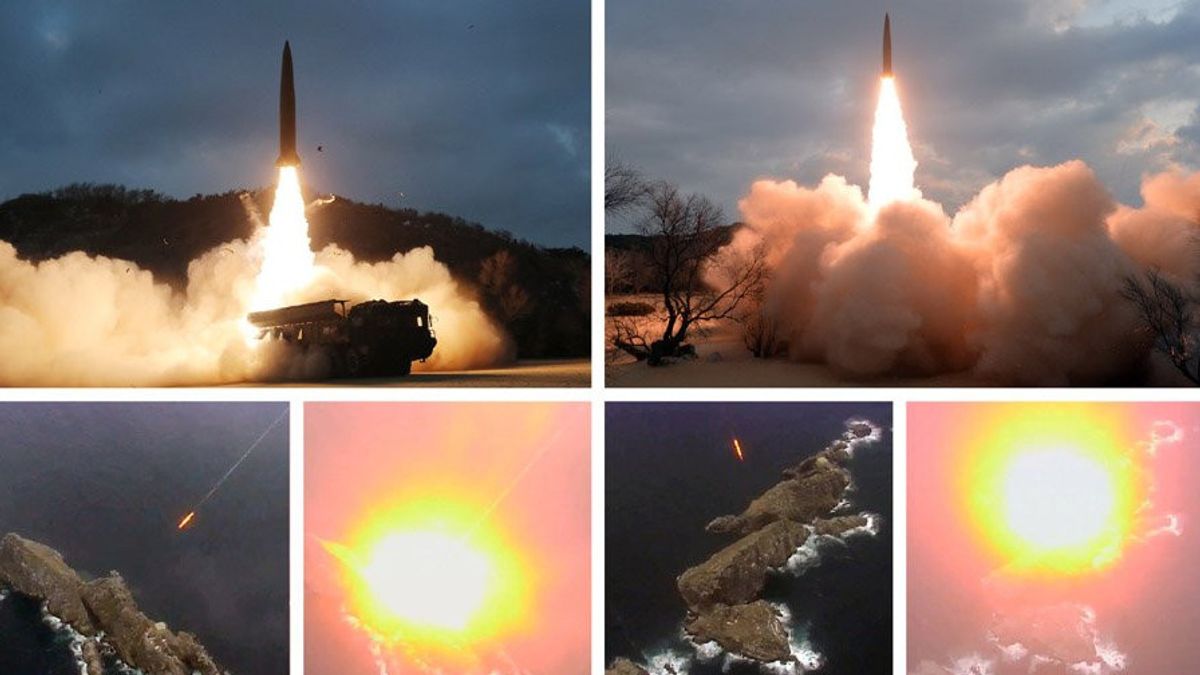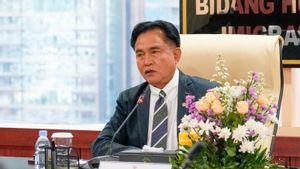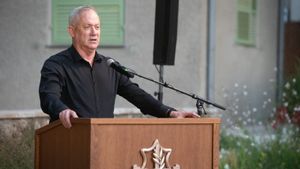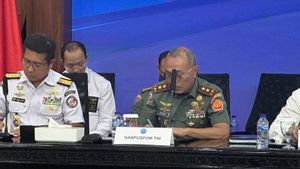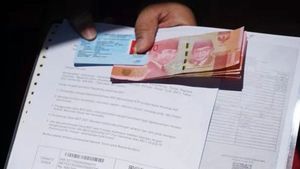JAKARTA - North Korea on Sunday fired what appeared to be the most powerful missile it has tested since US President Joe Biden took office, as it revived its old guidelines for wresting concessions from Washington and neighbors amid a protracted stalemate in diplomacy.
Japanese officials said the missile, based on a preliminary assessment of its flight path, could potentially reach a maximum altitude of 2,000 kilometers (1,242 miles) and cover a distance of 800 kilometers (497 miles) before landing in the sea.
Flight details show North Korea has been testing its long-range ballistic missiles since 2017, when it test-flyed three intercontinental-range ballistic missiles that demonstrated their potential range to reach deep into United States territory.
Sunday's test was North Korea's seventh weapons launch this month. The unusually fast pace of the tests demonstrates an intention to put pressure on President Biden's administration over long-stalled nuclear negotiations.
The launch came after North Korean leader Kim Jong Un presided over a ruling party meeting on January 20, during which senior party members made veiled threats to resume testing of nuclear explosives and ICBMs (intercontinental ballistic missiles), which Kim suspended in 2018 when starting diplomacy with the United States.
Japan's Chief Cabinet Secretary Hirokazu Matsuno said the missile flew for about 30 minutes and landed in waters outside Japan's exclusive economic zone.
Meanwhile, South Korea's Joint Chiefs of Staff said North Korea launched a suspected ballistic missile from the northern hinterland, but did not immediately provide further flight details.
Japan's assessment suggests North Korea is testing an intermediate-range ballistic missile or perhaps even a weapon close to ICBM capacity, said Lee Choon Geun, a missile expert and honorary researcher at South Korea's Institute for Science and Technology Policy.
"I think this means that the North Korean moratorium (on long-term testing) is effectively over," Lee said, citing the Associated Press Jan. 30.

Japan's coast guard issued a maritime safety warning, saying an object potentially a North Korean ballistic missile could have landed, but there were no immediate reports of damage to the ship or aircraft.
The launch came three days after North Korea fired two short-range ballistic missiles into the sea on Thursday. North Korea also carried out a test flight of a claimed pair of long-range cruise missiles on Tuesday, while pledging to strengthen its nuclear 'prevent war' and build more powerful weapons.
North Korea has stepped up its testing activity in recent months, including seven rounds of weapons launches so far in 2022, demonstrating its military might amid pandemic-related difficulties and a prolonged freeze in nuclear diplomacy with the United States.
Experts say North Korea could halt its testing after the start of the Beijing Winter Olympics next week out of respect for China, its main ally and economic lifeline. But there is also hope that North Korea can significantly increase its weapons demonstrations, once the Olympics conclude in February, to draw the attention of President Biden's Administration, which is more focused on confronting China and Russia over its conflict with Ukraine.
"North Korea launched a missile frenzy before the start of the Beijing Olympics, largely as a military modernization effort. Pyongyang also wants to increase national pride as it prepares to celebrate its political anniversary in the context of an economic struggle," said Leif-Eric Easley, a professor at Ewha University in Seoul.
"He wanted to remind Washington and Seoul that trying to overthrow him would be too costly. By threatening stability in Asia while global resources are running low elsewhere, Pyongyang is demanding the world compensate for acting like a 'responsible nuclear power," Easley added.
North Korea has justified its testing activities as an exercise of its right to self-defense and threatened tougher action after the Biden administration imposed new sanctions following two hypersonic missile tests earlier this month.
North Korean leader Kim Jong-un has repeatedly vowed to increase his nuclear power since a summit with President Donald Trump slipped in 2019, in which the United States rejected North Korean demands for major sanctions relief in exchange for giving up some of its nuclear capabilities.
Last year, he announced a new five-year plan to develop weapons and issued an ambitious wish list that includes hypersonic weapons, spy satellites, solid-fuel intercontinental ballistic missiles and submarine-launched nuclear missiles.
The English, Chinese, Japanese, Arabic, and French versions are automatically generated by the AI. So there may still be inaccuracies in translating, please always see Indonesian as our main language. (system supported by DigitalSiber.id)
